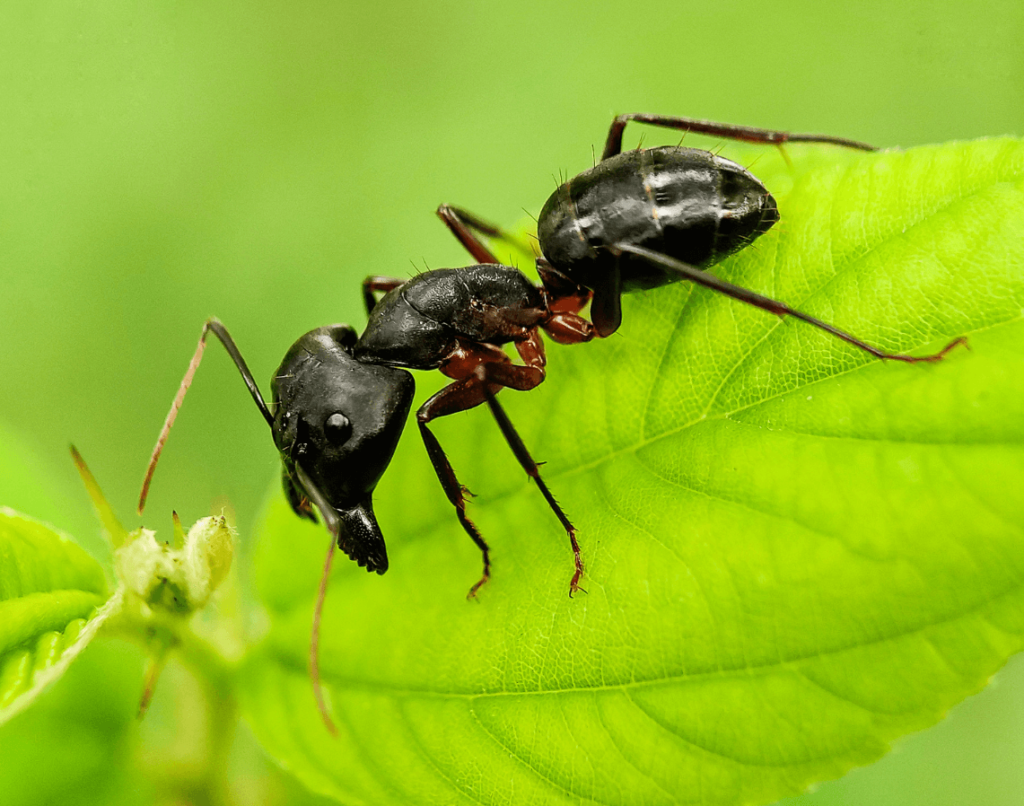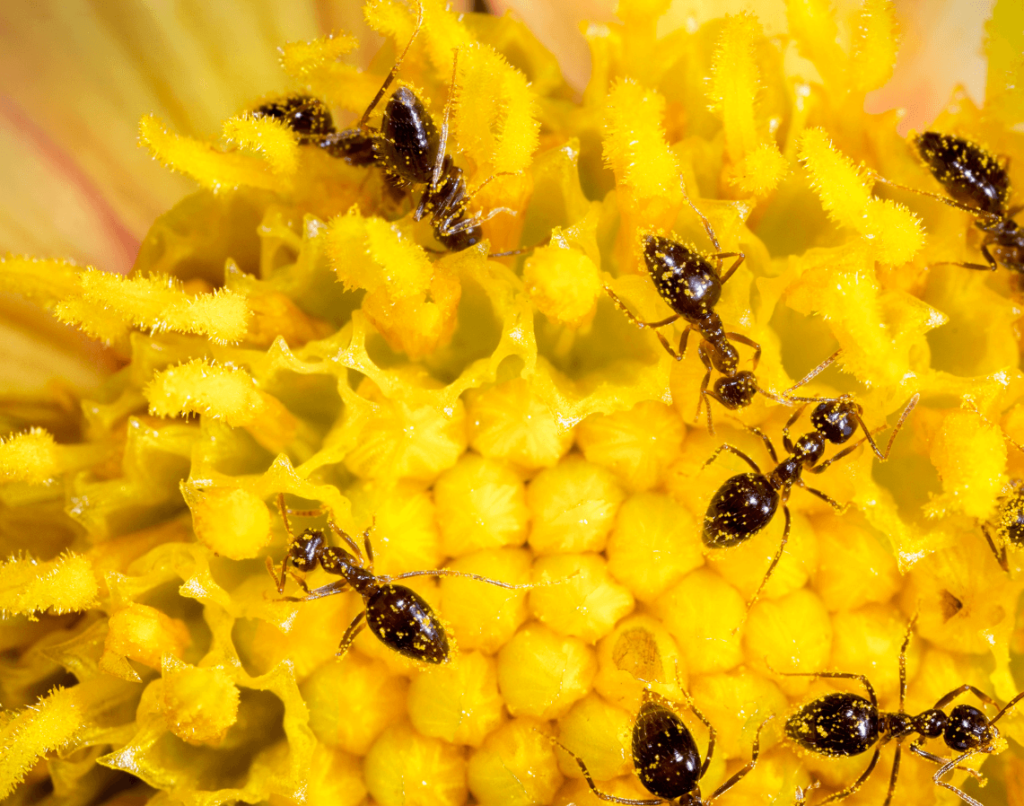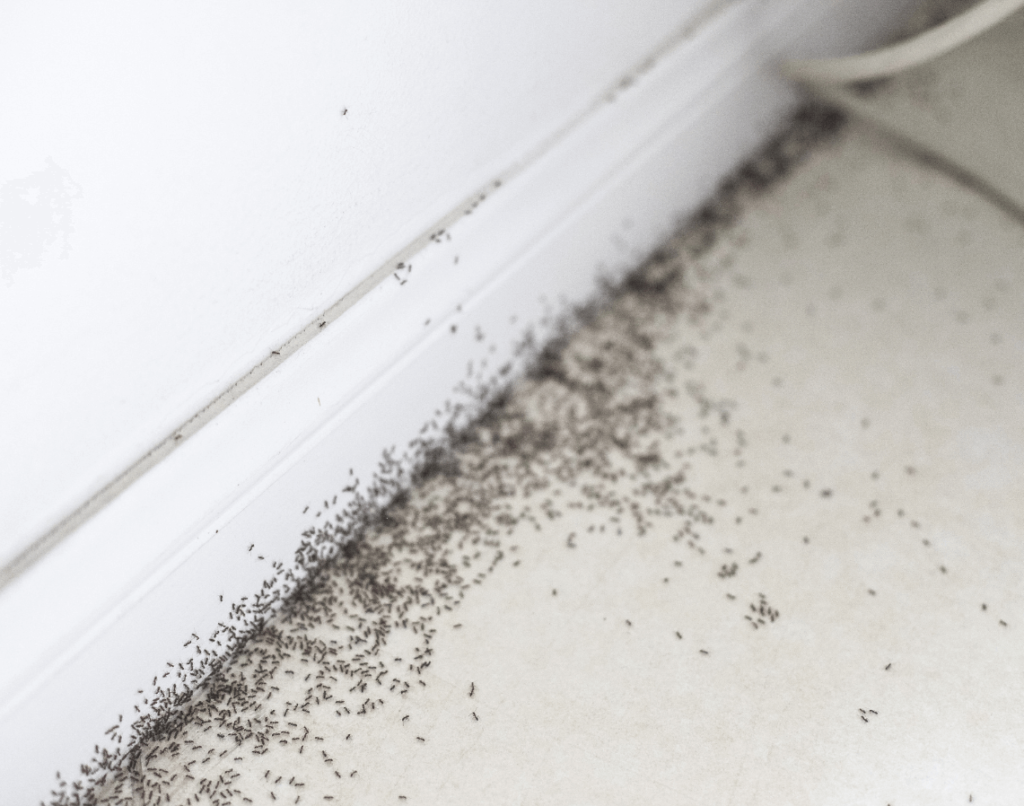Carpenter Ants Control
Carpenter ants can be a sneaky pest problem to have around your home. Even though carpenter ants are far from aggressive toward humans, having a large colony of these ants silently chewing away inside your walls or wood structures is undoubtedly alarming and can lead to serious structural damage if left unchecked. As dedicated professionals in comprehensive pest control services, the team at Express Pest Control has helped countless homeowners like you resolve their carpenter ant issues through our proven inspection and treatment methods.
What Are Carpenter Ants?
Carpenter ants are the most common ant that infests homes and buildings. They are a serious pest problem that can cause damage to structures, leading to costly repairs. These large ants range in size from ¼ inch to ¾ inch and are usually black or dark red. Carpenter ants get their name from excavating wood to build their nests. Unlike termites, they do not eat wood but burrow through it to create galleries and tunnels for their colonies.


Biology and Behavior Carpenter Ants
Carpenter ants have a complex social structure that includes workers, soldiers and reproductive individuals. They are typically found in moist or decaying wood, such as rotting logs or tree stumps, but can also infest buildings if the conditions are right. These ants do not live off the wood they excavate but instead feed on insects, sweets, and protein-based substances. Carpenter ants are most active at night and prefer to travel in humid conditions, making it difficult for homeowners to spot them during the day.
Carpenter ants undergo complete metamorphosis, with four distinct life stages: egg, larva, pupa, and adult. The queen carpenter ant can lay thousands of eggs in her lifespan, contributing to rapid colony growth if left untreated. Worker sizes vary depending on their role in the colony, with more minor workers responsible for tending to the queen and caring for the brood, while larger workers are tasked with foraging and expanding the nest.
Signs Of Infestation
Catching a carpenter ant infestation early is crucial to prevent serious damage to your home’s structure. Here are some signs that you may have a carpenter ant problem:
- Sawdust-like material (known as frass) around windows, doors, or other wooden structures
- Rustling sounds coming from inside walls or wood structures
- Visible ants were seen crawling in and out of cracks and crevices near wood
- Uneven or hollow-sounding wood when tapped on
- Discoloration or softness of wood structures
If you notice any of these signs, it is essential to contact a pest control professional immediately for an inspection and treatment.

Prevention and Control
The best way to prevent a carpenter’s ant infestation is to eliminate any potential entry points and moisture sources in and around your home. This includes:
- Sealing cracks and crevices where ants can enter
- Removing standing water or fixing leaks that may attract ants
- Trimming trees and bushes away from the house to reduce access points for ants
- Keeping firewood and other wooden materials away from the house
- Regularly inspecting and treating any moisture or wood damage in and around your home
If you suspect a carpenter ant infestation, it is best to consult with a professional pest control service like Express Pest Control. Our technicians have the knowledge and experience to correctly identify and treat carpenter ant colonies, using safe and effective methods to rid your home of these pests. We also offer preventative treatments to keep these ants from returning in the future.
Contact Us today for a consultation and to learn more about our carpenter ant control services. We are dedicated to providing comprehensive, affordable pest control solutions for your home. So don’t wait. Take action against carpenter ants and protect your home from costly structural damage. Let Express Pest Control help you today!
